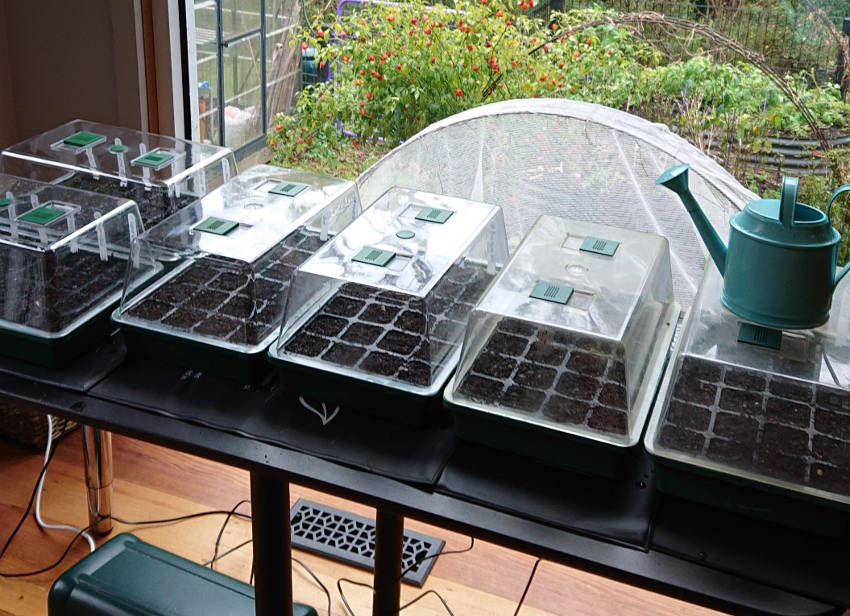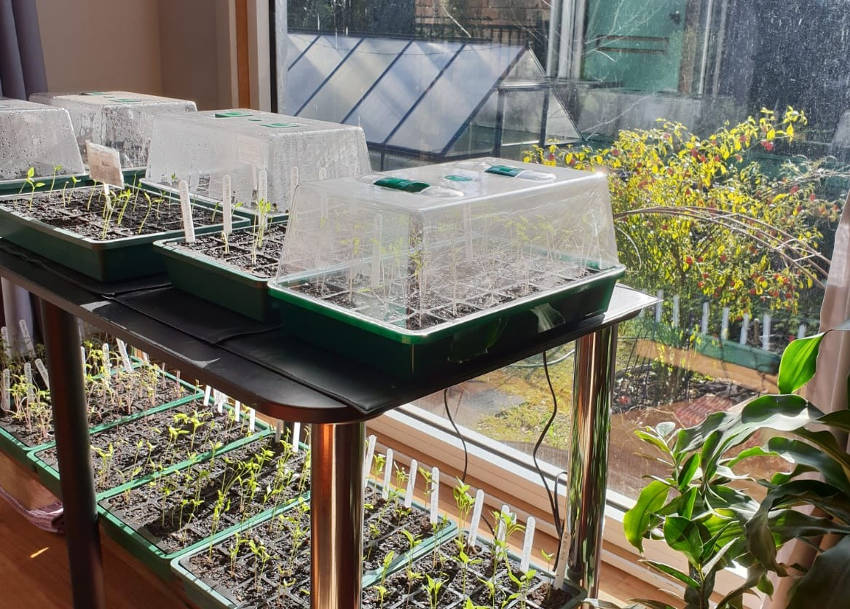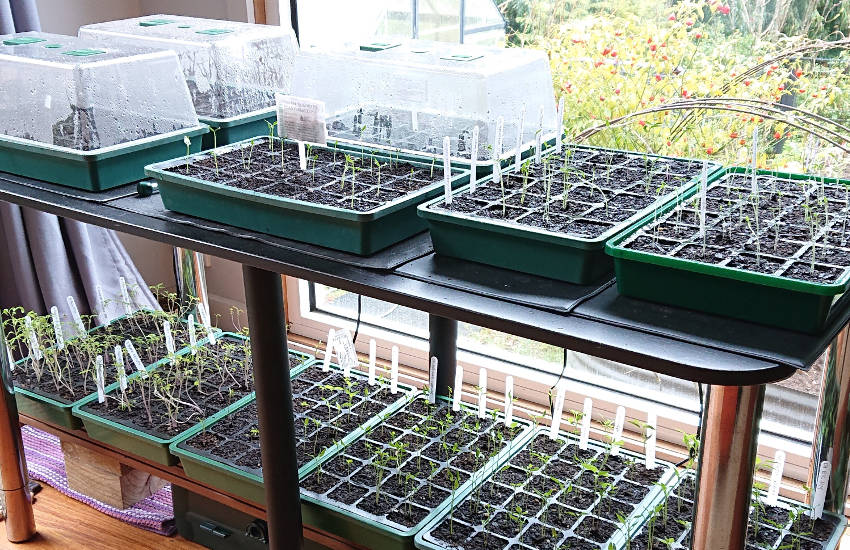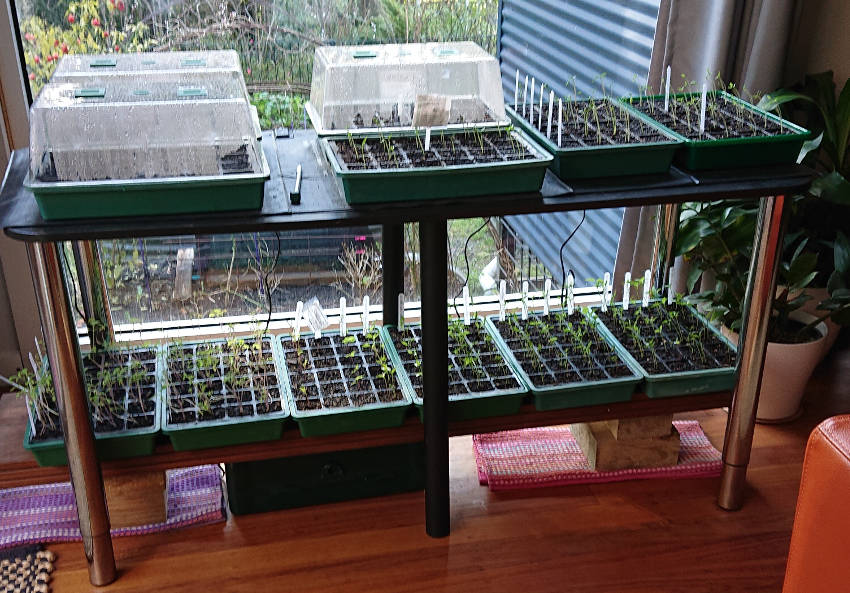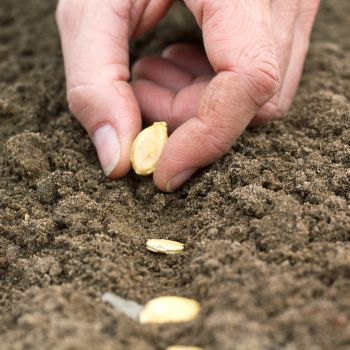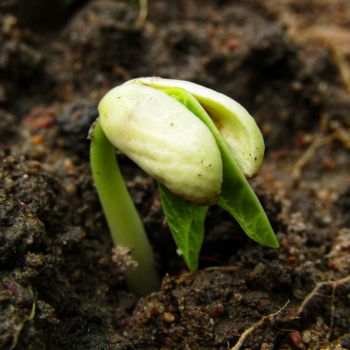Germination is the vital start of a plant's journey, and the conditions need to be right to ensure it happens smoothly. Without the correct combination of warmth and moisture, many seeds will take longer to germinate, do so in lower numbers, or even fail to sprout at all.
And once the delicate seedlings do emerge, even a short period of dryness or cold can kill them off before they develop the vigour to survive those hardships.
These difficulties mean it makes sense to look after your seeds and seedlings as carefully as possible. If you want to grow healthy plants reliably from seed, using a mini greenhouse can be a great start, taking much of the guesswork out of germination.
What is a Mini Greenhouse?
Mini greenhouses are a way of maintaining the right environment for seeds and seedlings while germinating them at home. They replicate the controlled conditions used by professional growers in large glass greenhouses, but at a much lower cost and in a format suitable for home use.
The most common type of mini greenhouse consists of three main parts:
- The Base
The base of the mini greenhouse is a sturdy plastic container which also acts as a drip tray, collecting any water overflow to minimise mess.
- The Seed Tray
The moulded seed tray fits into the base, and is usually divided into small plant cells or plugs for individual seed sowing.
- The Transparent Lid
The transparent plastic lid acts like the glass of a normal full-sized greenhouse, trapping daylight to increase the soil temperature, while also providing some protection against elements and pests if used outdoors. The lid also helps to retain moisture, stopping the soil from drying out so quickly, and keeping a healthy level of humidity in the air.
All this can be done with an ordinary covered seed tray of course. However, a mini greenhouse is more efficient thanks to the fitted vents which can be opened to control warmth and humidity more easily. These vents can be on the top of the lid for quickly boosting airflow, on the sides for more gentle control, or on both top and sides for full flexibility.
Together these parts add up to a convenient, portable, and effective environment for germination and early seedling growth.
Commercial Vs. DIY Mini Greenhouses
As far as gardening equipment goes, a mini greenhouse is a fairly straightforward piece of kit, and you could make a reasonable DIY alternative using plastic containers and other household items. However, the commercially produced model will be more rugged, have more flexible airflow control thanks to properly designed vents, and will tend to make more efficient use of space.
When to Use a Mini Greenhouse
Although a mini greenhouse can speed up reliable germination for many kinds of seed, there are a few situations where using one really comes into its own.
Firstly, you may not live in a location with a long enough or hot enough growing season for vegetables such as tomatoes, chillies, and other heat-loving tropical natives. By using a mini greenhouse, you can sow earlier in spring and bring seedlings to transplanting size more quickly, helping you squeeze a few more weeks into the horticultural year.
Secondly, some seeds are notoriously slow and unreliable germinators. Parsley, for example, can take several weeks to show signs of sprouting, and if for whatever reason it doesn't happen at all, that's several weeks wasted. Using a mini greenhouse will shorten the waiting time and increase the germination rates of these reluctant plants.
Lastly, mini greenhouses can also be used when taking cuttings, providing a comfortable environment for the new plants to develop their first roots.
However, a mini greenhouse isn't suitable for all plants. With species that dislike being transplanted, such as carrots, beetroot, and others with long or delicate root systems, the gains of earlier germination may be wiped out by the shock of being moved. With these plants, direct sowing later in the season is usually the better option.
How to Use a Mini Greenhouse
Although it's commonly advised to place seedlings on a sunny windowsill to speed early growth, care should be taken when using a mini greenhouse. Direct sun can quickly produce scorching temperatures under the transparent lid, even with the airflow vents left open. For best results, place your greenhouse in a spot with high ambient light levels but out of the strongest of the sun's rays.
Most commonly, mini greenhouses are used indoors, but they can also be used outdoors to give your seeds a little extra protection. However, in this case be sure to secure the lid against wind and pests, using a little garden string or even just a carefully placed rock or two.
To sow, fill the seed tray with fine compost, and water it to ensure an even moisture level. Place two or more seeds into each of the tray's cells, cover with a thin layer of compost or vermiculite, and mist with a garden sprayer.
Place the lid onto the greenhouse, with the vents closed at first, and move it to its germination location. Keep an eye on the humidity and heat levels at different times of the day, opening the vents to let a little air out if the greenhouse seems to be too hot or if condensation is building up too heavily.
Keep the compost moist until germination, after which remove the weaker plants from each cell to leave one seedling per cell. As the seedlings grow, leave the side vents open for progressively longer periods each day to help the young plants adjust to a less pampered atmosphere, ready for transplanting to pots or their ultimate location.
If you're using the greenhouse for another round of seed germination, empty the compost and clean all parts with warm soapy water to prevent build-up of bacteria or fungal infection.
Optional Heat Mats
As useful as mini greenhouses are, they can be taken to the next level by adding a heat mat to your germination setup. Usually controlled with a thermostat, heat mats are flexible plastic sheets containing electrical elements, placed under the greenhouse's base to provide a stable temperature ideal for germination.
This added level of control makes the heating mat and greenhouse combination usable in colder rooms, where low ambient temperatures can delay or prevent germination, or for rooms with inconsistent sunlight leading to highly variable temperatures. It also makes it easier to germinate tropical plants which rely on steadily high temperatures and humidity throughout the day and night.
But with or without a heating mat, using a mini greenhouse adds to your control over the germination process, helping to create healthy seedlings which go on to be strong and productive adult plants.
